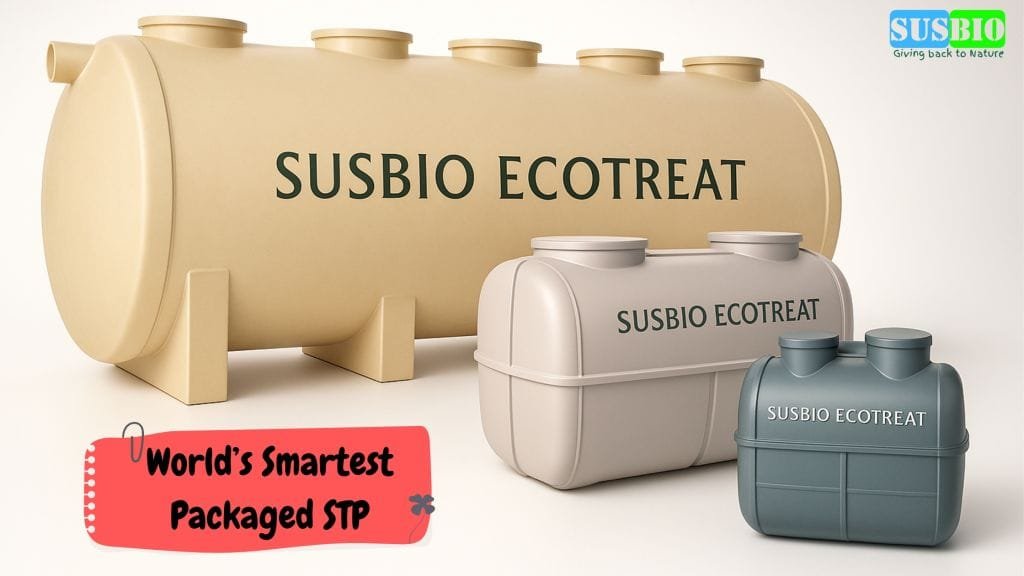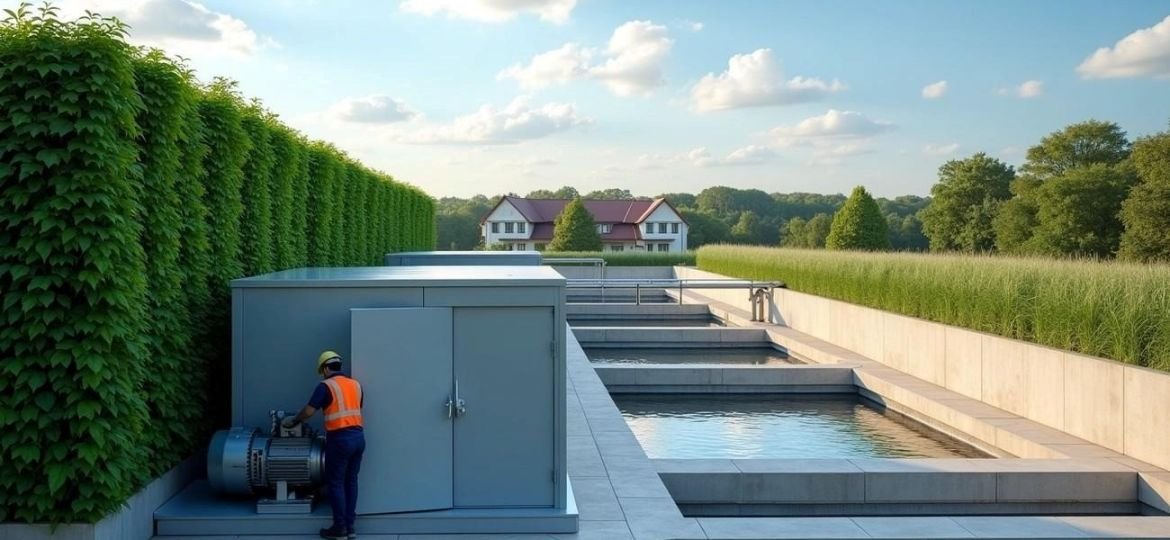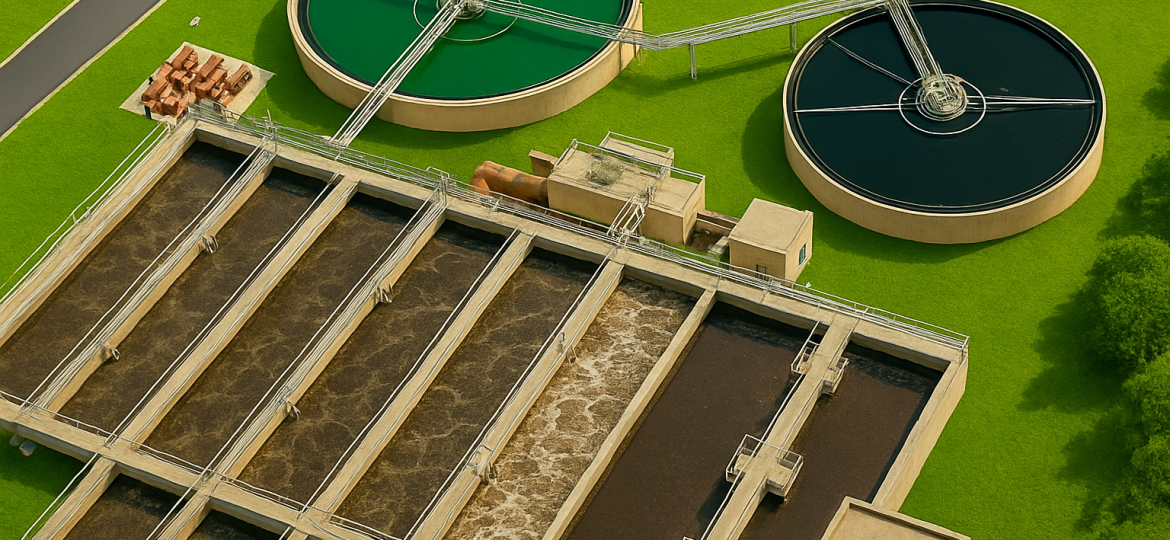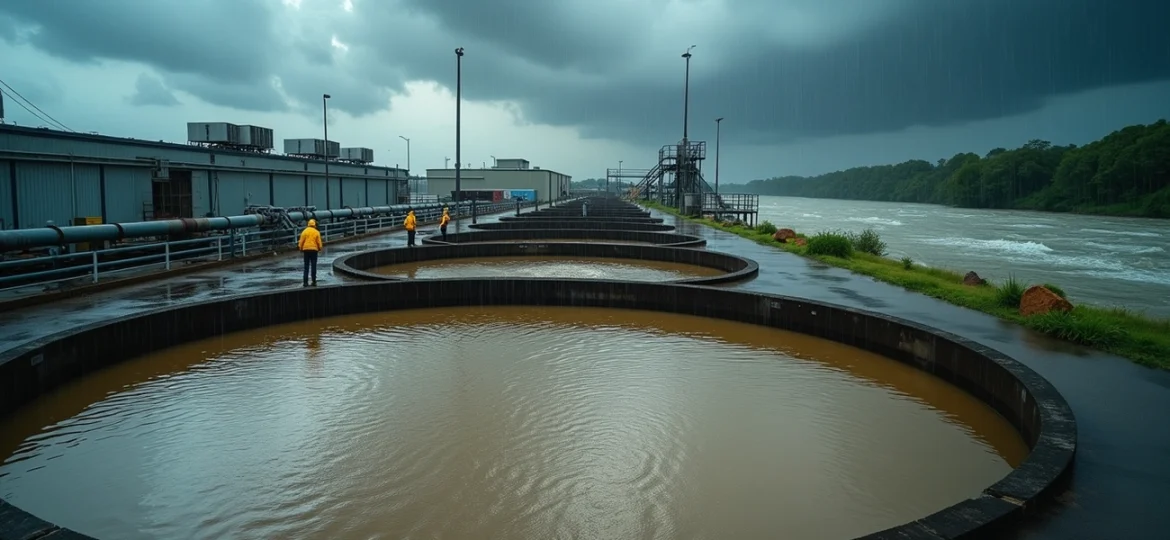Introduction
In residential complexes and apartment buildings, effective sewage treatment is more than a regulatory requirement—it’s essential for maintaining a healthy, sustainable living environment. Apartment complexes generate significant amounts of wastewater daily, including organic waste, chemicals, and other pollutants. Without a well-designed sewage treatment plants (STPs), untreated sewage can lead to environmental hazards, health issues, and even financial penalties for non-compliance with local regulations. Selecting the right STP and STP manufacturer ensures not only the well-being of residents but also the property’s long-term value and environmental impact.
This guide walks through the key factors apartment managers and owners should consider when choosing the best sewage treatment solution for their specific needs.
Why an STP Is Crucial for Apartments

In an apartment complex, sewage treatment is crucial for managing high volumes of wastewater produced by daily activities like cooking, cleaning, and washing. A dedicated STP can:
- Ensure Compliance: Meet local and national wastewater disposal standards.
- Reduce Costs: Minimize water bills by recycling treated wastewater for gardening, flushing, and other non-potable uses.
- Support Sustainability: Promote green living practices by reducing pollution and conserving water.
Why Is STP Mandatory for Apartments?
Sewage Treatment Plants (STPs) are essential for apartments for several key reasons:
- Environmental Protection: STPs efficiently treat wastewater, preventing pollution of water bodies. They also recycle water for non-potable uses like gardening and cleaning, reducing demand on municipal supplies.
- Health and Hygiene: STPs help prevent waterborne diseases by removing harmful pathogens and controlling foul odors, ensuring a healthier living environment.
- Legal Requirements: In many regions, including India, laws mandate STPs for large apartment complexes. Failure to comply can result in fines and legal consequences.
- Sustainability: STPs support eco-friendly living by reducing wastewater pollution and promoting self-sufficiency in large apartment complexes.
- Maintenance and Property Value: Properly functioning STPs help maintain cleanliness, prevent blockages, and increase property value by ensuring legal compliance.
STPs are mandatory in apartments to manage waste, protect health and the environment, comply with regulations, and enhance living conditions. Their role will only grow as urban areas expand.
What Are the Benefits of STPs in Residential Complexes?
Sewage Treatment Plants (STPs) offer several key benefits to residential complexes:
- Environmental Protection: STPs treat sewage before it’s released, preventing pollution of nearby water bodies and reducing the impact on the environment.
- Water Recycling: STPs recycle treated water for non-potable uses like gardening, flushing, and cleaning, helping to conserve water and reduce dependency on municipal supply.
- Improved Health and Hygiene: By removing harmful pathogens and contaminants, STPs help prevent waterborne diseases, ensuring a healthier living environment for residents.
- Odor Control: STPs control foul odors associated with untreated sewage, improving the overall air quality and living conditions in the complex.
- Compliance with Legal Regulations: Many regions have made STPs mandatory for apartment complexes. Having one ensures compliance with local laws and avoids potential fines or legal consequences.
- Cost Savings: STPs reduce the need for external sewage disposal services, lowering waste management costs for the apartment complex in the long run.
- Increased Property Value: A well-maintained STP can improve the overall quality of living, making the property more desirable and increasing its value.
- Sustainable Living: STPs promote eco-friendly living by managing wastewater efficiently, aligning with sustainability goals and reducing the environmental footprint of the complex.
In summary, STPs provide long-term benefits by ensuring environmental protection, promoting sustainability, improving health, and complying with legal regulations, all while enhancing the quality of life for residents.
Factors to Considers while choosing the Right STP
1. Capacity and Scalability
- Evaluate Current and Future Needs: Assess the current population of the apartment complex and anticipate any potential growth. Choose an STP with a capacity that meets present demands and allows room for future expansion.
- Avoid Overloading: Overloading an STP can reduce its efficiency and lifespan, while an oversized plant may lead to higher initial costs without added benefits.
2. Understanding Wastewater Composition
- Analyze Contaminants: Apartment wastewater typically contains high levels of organic waste, detergents, oils, and sometimes chemicals. Understanding these characteristics will help in choosing the right treatment technology to ensure effective removal of pollutants.
- Consult a Professional: A wastewater expert can analyze samples to provide insights on what pollutants need targeting, ensuring the STP chosen is optimized for your specific requirements.
3. Treatment Technology Options
- Activated Sludge Process (ASP): Suitable for apartments generating higher organic waste, as it effectively breaks down organic matter.
- Membrane Bioreactor (MBR): A high-efficiency option that combines biological treatment and membrane filtration, producing clear, reusable water. MBR is ideal for complexes aiming for high water reuse rates.
- Sequential Batch Reactor (SBR): A versatile option that treats wastewater in batches, beneficial for apartments with fluctuating wastewater flow.
Choose a treatment technology based on efficiency, maintenance, and the possibility of recycling treated water for secondary uses.
4. Energy Efficiency and Operational Costs
- Assess Energy Requirements: Energy-efficient systems may have higher initial costs but offer savings over time. Look for STPs with automated control systems that optimize energy usage.
- Consider Maintenance Needs: Regular maintenance is essential to keep an STP running smoothly. Factor in operational costs, including energy, labor, and consumables, when budgeting for your STP.
5. Space and Installation Requirements
- Evaluate Available Space: In residential complexes, space is often a limitation. Prefabricated or compact STPs can save valuable space, making them a great choice for apartment settings.
- Check Noise and Odor Control: Ensure the STP design includes odor management systems and soundproofing if installed near residential areas. These features improve the residents’ experience and help maintain a clean, pleasant environment.
6. Water Reuse Potential
- Reuse Treated Water: Many apartments can reduce water bills by reusing treated wastewater for gardening, flushing, and cleaning purposes. Select an STP that produces high-quality effluent safe for such non-potable uses.
- Reduce Overall Water Demand: An STP with water reuse capabilities supports sustainable water management, reducing the complex’s environmental footprint.
7. Compliance with Local Regulations
- Understand Legal Requirements: Regulations for wastewater treatment and disposal vary by location. Research the discharge standards in your area and ensure your STP can meet or exceed these requirements.
- Choose a Certified STP Provider: Working with an experienced STP provider familiar with local compliance ensures that your system will meet all regulatory standards, avoiding fines or legal issues.
8. Operational Support and After-Sales Service
- Choose a Provider with Local Support: Reliable after-sales service ensures that maintenance needs, repairs, and parts replacements are managed smoothly.
- Evaluate Warranty and Support Options: Opt for an STP provider that offers extended warranties, quick service, and support packages. This makes managing and operating your sewage treatment plant much easier over time.
Cost of Sewage Treatment Plant for Apartments
When selecting a sewage treatment plant (STP) for apartments, the cost of sewage treatment plant for apartments is a crucial factor to consider. Costs vary depending on several factors such as the system type (Aerobic or Anaerobic), capacity, technology, and local conditions.
Cost of Sewage Treatment Plant for Apartments by Capacity
The cost of sewage treatment plant for apartments is directly influenced by the capacity of the system, with larger systems typically costing more due to their higher treatment capabilities and more complex technology.
1. 10 KLD STP (For Small Apartment Complexes)
For small apartment complexes with 30-50 units, a 10 KLD STP is typically sufficient.
Estimated Price Range:
- Aerobic STP: INR 4,00,000 to INR 7,00,000
- Anaerobic STP: INR 3,00,000 to INR 5,50,000
Key Features:
- Best suited for low to medium sewage generation.
- Generally used for smaller residential projects.
2. 50 KLD STP (For Medium Apartment Complexes)
A 50 KLD STP is commonly used for medium-sized apartment complexes with around 150-250 units.
Estimated Price Range:
- Aerobic STP: INR 10,00,000 to INR 18,00,000
- Anaerobic STP: INR 7,00,000 to INR 12,00,000
Key Features:
- Suitable for medium to large residential projects.
- Higher operational costs due to the need for aeration and energy-intensive equipment.
3. 100 KLD STP (For Large Apartment Complexes)
A 100 KLD STP is designed for larger apartment complexes with 250+ units, offering a high volume of wastewater treatment.
Estimated Price Range:
- Aerobic STP: INR 15,00,000 to INR 30,00,000
- Anaerobic STP: INR 10,00,000 to INR 20,00,000
Key Features:
- Ideal for large apartments with high sewage generation.
- High-quality treatment with potential for significant water reuse.
Estimated Costs Based on Apartment Size
Apartment Size | STP Capacity | Estimated Cost (Aerobic) | Estimated Cost (Anaerobic) |
Small Apartments (10-50 Units) | 10 KLD | INR 4,00,000 to INR 7,00,000 | INR 3,00,000 to INR 5,50,000 |
Medium Apartments (150-250 Units) | 50 KLD | INR 10,00,000 to INR 18,00,000 | INR 7,00,000 to INR 12,00,000 |
Large Apartments (250+ Units) | 100 KLD | INR 15,00,000 to INR 30,00,000 | INR 10,00,000 to INR 20,00,000 |
Understanding the Legal Requirements for STPs in Apartments
Sewage Treatment Plants (STPs) are subject to legal requirements that ensure proper wastewater management in apartment complexes. Here’s a summary of key legal aspects:
1. Government Regulations
- Mandatory Installation: Many regions, such as Bengaluru, require STPs for apartment complexes with over 120 units to prevent water pollution.
- In-Situ STP: Some areas mandate on-site treatment plants to reduce reliance on municipal systems.
2. Environmental Laws
- Pollution Control: STPs help apartments comply with the Water (Prevention and Control of Pollution) Act, 1974, ensuring wastewater meets environmental standards.
- Consent from Pollution Control Boards: Approval from local authorities may be required to operate an STP.
3. Penalties for Non-Compliance
- Apartments without proper STPs face fines, penalties, or closure orders.
4. Maintenance and Monitoring
- Regular Inspections: Authorities require periodic checks and proper maintenance to ensure STPs function correctly.
- Documentation: Apartments must maintain records of operation and maintenance.
5. Exemptions
- Smaller apartments with fewer than 120 units may be exempt but are encouraged to use alternative wastewater solutions.
Conclusion
Choosing the right sewage treatment plant for an apartment complex involves assessing multiple factors, from capacity and treatment technology to operational costs and regulatory compliance. A well-chosen STP offers apartment owners peace of mind by handling wastewater efficiently, ensuring compliance, and even reducing costs through water reuse. Investing in the right system not only keeps residents safe and satisfied but also contributes to a sustainable and environmentally responsible community.






